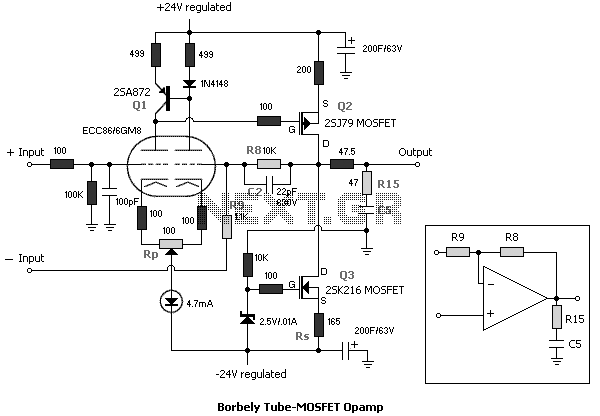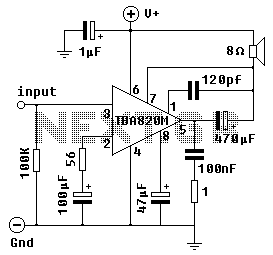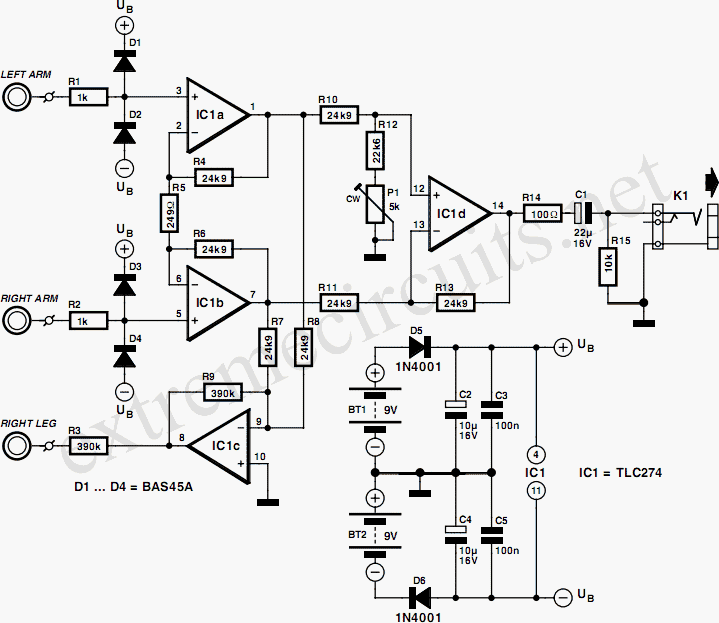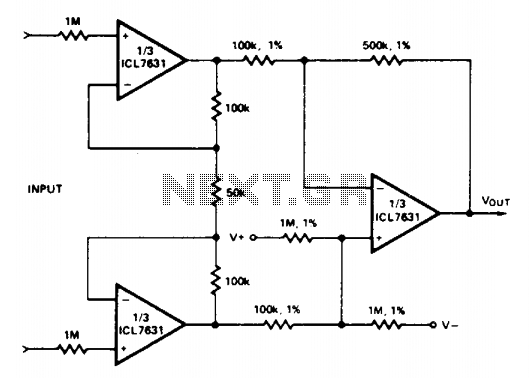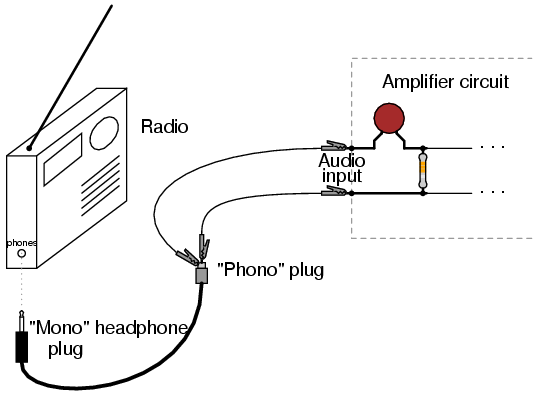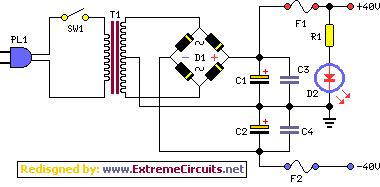
Common series negative feedback amplifier
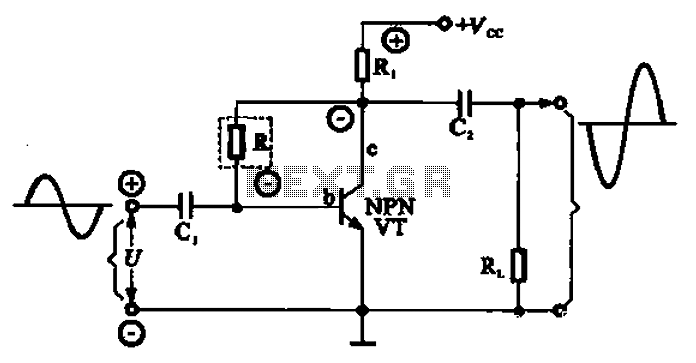
A common series negative feedback amplifier is depicted in this configuration. In this amplifier, R acts as the resistor for the negative feedback element, which is part of the input circuit. The output circuit is linked to both the input and output circuits. Initially, if a positive instantaneous input signal is assumed, the voltage polarity at the emitter (e) is the same as that at the base (b), resulting in an increase in the potential at the transistor's emitter. The emitter voltage equates to the input voltage (Ub = -U - Uf). The feedback element R reduces the input signal to a voltage (Ube), thus functioning as the negative feedback resistor. This negative feedback resistor R is essential for stabilizing the amplifier; a higher resistance leads to a lower overall gain of the amplifier. Additionally, the negative feedback resistor R is connected in parallel with a coupling capacitor C, effectively short-circuiting the AC signal at the emitter (e) and eliminating negative feedback for AC signals, which allows for a higher AC gain.
The common series negative feedback amplifier operates by utilizing a negative feedback loop to enhance stability and control over the gain of the amplifier. The resistor R, positioned in the feedback path, plays a crucial role in determining the overall gain of the circuit. By introducing feedback, the amplifier can correct for variations in input signal levels, ensuring a more consistent output.
When a positive input signal is applied, the transistor's emitter voltage rises, reflecting the input voltage. This relationship is critical for understanding how the amplifier processes signals. The feedback resistor R diminishes the input signal, effectively lowering the voltage at the base-emitter junction to Ube. The negative feedback introduced by R counteracts any fluctuations in input signal, stabilizing the amplifier's performance.
Furthermore, the coupling capacitor C facilitates AC signals by bypassing the negative feedback for alternating current. This configuration allows AC signals to pass through without the influence of the feedback loop, enabling the amplifier to achieve a higher gain for AC applications while maintaining stability for DC signals.
In summary, the common series negative feedback amplifier is a versatile circuit that utilizes negative feedback and coupling capacitors to optimize performance across different signal types. The careful selection of resistor R and capacitor C values is essential for achieving the desired amplification characteristics while ensuring stability and reliability in the amplifier's operation. Common series negative feedback amplifier (2) series negative feedback amplifier shown in series is a common negative feedback amplifier. Wherein R is the resistor current nega tive feedback element, because it belongs to the input circuit, output circuit belongs to the input and output circuit linked up. First, assume that an instantaneous input signal is positive (+), due to the emitter (e) of the polarity of the voltage to the base (b) the same, but also for the positive (+), increases the potential of the transistor emitter.
Because the emitter voltage is equal to the input voltage Ub {-U-Uf, through feedback element R, weaken the input signal into a voltage Ube, so negative feedback is feedback elements R. A negative feedback resistor R is used to stabilize the amplifier, the greater the resistance, the entire amplifier is smaller magnification.
And a negative feedback resistor R is connected in parallel to a capacitor coupling capacitor C, corresponds to the AC emitter (e) of the short-circuit, the AC signal has no negative feedback, thereby to obtain a larger magnification AC
The common series negative feedback amplifier operates by utilizing a negative feedback loop to enhance stability and control over the gain of the amplifier. The resistor R, positioned in the feedback path, plays a crucial role in determining the overall gain of the circuit. By introducing feedback, the amplifier can correct for variations in input signal levels, ensuring a more consistent output.
When a positive input signal is applied, the transistor's emitter voltage rises, reflecting the input voltage. This relationship is critical for understanding how the amplifier processes signals. The feedback resistor R diminishes the input signal, effectively lowering the voltage at the base-emitter junction to Ube. The negative feedback introduced by R counteracts any fluctuations in input signal, stabilizing the amplifier's performance.
Furthermore, the coupling capacitor C facilitates AC signals by bypassing the negative feedback for alternating current. This configuration allows AC signals to pass through without the influence of the feedback loop, enabling the amplifier to achieve a higher gain for AC applications while maintaining stability for DC signals.
In summary, the common series negative feedback amplifier is a versatile circuit that utilizes negative feedback and coupling capacitors to optimize performance across different signal types. The careful selection of resistor R and capacitor C values is essential for achieving the desired amplification characteristics while ensuring stability and reliability in the amplifier's operation. Common series negative feedback amplifier (2) series negative feedback amplifier shown in series is a common negative feedback amplifier. Wherein R is the resistor current nega tive feedback element, because it belongs to the input circuit, output circuit belongs to the input and output circuit linked up. First, assume that an instantaneous input signal is positive (+), due to the emitter (e) of the polarity of the voltage to the base (b) the same, but also for the positive (+), increases the potential of the transistor emitter.
Because the emitter voltage is equal to the input voltage Ub {-U-Uf, through feedback element R, weaken the input signal into a voltage Ube, so negative feedback is feedback elements R. A negative feedback resistor R is used to stabilize the amplifier, the greater the resistance, the entire amplifier is smaller magnification.
And a negative feedback resistor R is connected in parallel to a capacitor coupling capacitor C, corresponds to the AC emitter (e) of the short-circuit, the AC signal has no negative feedback, thereby to obtain a larger magnification AC
